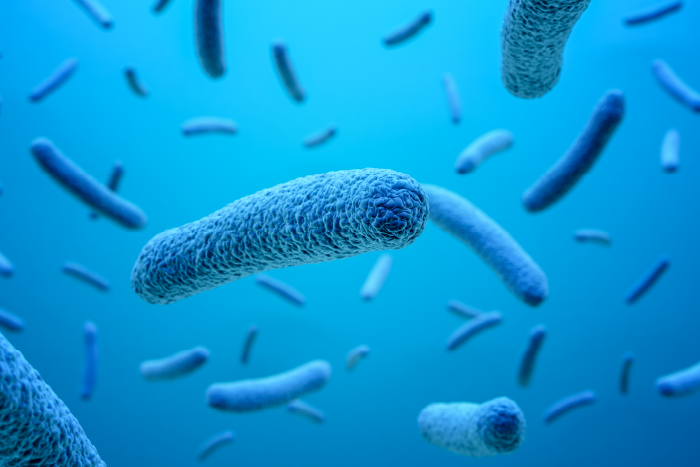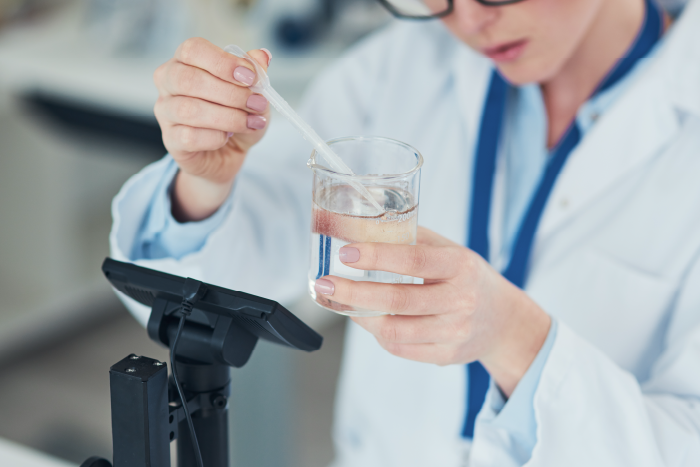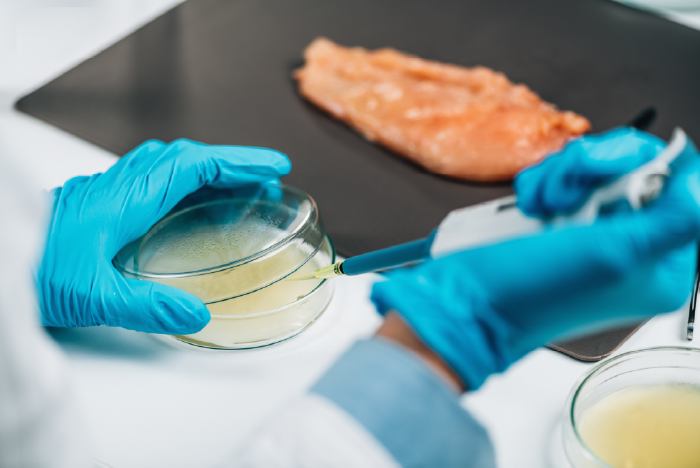
Legionella Risk Assessment in Dubai : Certified Testing & Compliance
Introduction
In Dubai, a Legionella risk assessment isn’t optional—it’s a legal duty under Dubai Municipality guidelines. Regular certified testing stops Legionella bacteria from cooling towers, storage tanks and plumbing, protecting people from Legionnaires’ disease and keeping your business compliant.
At Reliable Testing Laboratory LLC, we specialize in providing certified Legionella test for water services in Dubai, ensuring that your water systems remain compliant with local regulations and safe for use. Don’t leave water safety to chance—learn more about how we can help protect your systems today.
What is Legionella in Water?
Legionella is a type of bacteria commonly found in natural water sources like rivers and lakes. However, it can also grow in man-made water systems, such as plumbing, cooling towers, hot tubs, and water tanks. When water temperatures are between 20-45°C (68-113°F) and conditions allow the bacteria to thrive, it can multiply and become a health risk.
When people inhale tiny water droplets containing Legionella, they can develop Legionnaires’ disease, a severe form of pneumonia. It’s particularly dangerous for older adults, smokers, and those with weakened immune systems.
Regular Legionella water testing and maintenance of water systems are essential to prevent the growth and spread of this harmful bacteria, ensuring a safe and healthy environment for everyone.
Where is Legionella mainly found?
Legionella bacteria are commonly found in natural water sources, such as lakes, rivers, and streams. However, they thrive in man-made water systems, especially when conditions are right. Some of the most common places where Legionella can be found include:
- Hot Water Tanks and Boilers : If water temperatures are not properly maintained, Legionella can grow in these systems.
- Cooling Towers: These large structures are used in air conditioning systems, and Legionella can thrive in the water they use.
- Plumbing Systems: Stagnant water in pipes, particularly in large buildings, is a common breeding ground for the bacteria.
- Hot Tubs and Spas: If not cleaned and maintained regularly, these can harbor Legionella bacteria.
- Decorative Fountains: Stagnant water in fountains can also become a breeding ground for Legionella.
- Showerheads and Faucets: Water droplets from showers and taps can become aerosolized, spreading the bacteria if the water system is contaminated.
- Water Storage Tanks: Poorly maintained water storage systems, particularly in older buildings, can be breeding grounds for Legionella.
What happens if legionella is detected in water?
Legionnaires’ disease is a serious type of pneumonia caused by the Legionella bacteria. It primarily affects the lungs and can result in severe illness, particularly for individuals who are at higher risk, such as the elderly, smokers, and people with weakened immune systems.
The disease is contracted by inhaling aerosolized water droplets containing the bacteria, which can occur in places with contaminated water systems like cooling towers, hot tubs, and plumbing systems.
Symptoms of Legionnaires’ Disease
The symptoms of Legionnaires’ disease typically begin 2-10 days after exposure to the Legionella bacteria and can resemble other types of pneumonia. Common symptoms
include:
- Cough: Often a dry cough that may become more severe.
- Fever: High fever, often over 38°C (100°F), which is one of the first signs.
- Shortness of Breath: difficulty breathing or feeling breathless, especially when moving or exerting oneself.
- Chest Pain: Pain or discomfort in the chest, often due to lung infection.
- Headache: Severe headaches can occur alongside other symptoms.
- Muscle Aches: generalized muscle pain or weakness.
- Fatigue: extreme tiredness, which may be overwhelming and affect daily activities.
- Diarrhea or Nausea: Gastrointestinal symptoms like diarrhea, nausea, or vomiting may occur in some cases.
How Does Legionella Grow in Water?
Legionella bacteria thrive in specific conditions that allow them to multiply rapidly, particularly in man-made water systems. Understanding how and why Legionella grows in water is crucial for preventing outbreaks and maintaining water safety.
Ideal Temperature Range for Legionella Growth
Legionella grows best in water temperatures between 20-45°C (68-113°F). Within this range, the bacteria can multiply rapidly, making them a significant health threat. Therefore, it’s crucial to maintain:
- Hot water: Above 50°C (122°F) to kill Legionella.
- Cold water: Below 20°C (68°F) to prevent growth.
Contributing Factors for Legionella Survival
Several factors make it easier for Legionella bacteria to survive and spread in water systems:
1. Stagnant Water:
When water sits still in pipes or tanks for long periods, it provides the perfect environment for Legionella to grow. Stagnant water often occurs in rarely used pipes, water tanks, or cooling towers, where water isn’t circulated regularly.
2. Poor Maintenance:
Lack of regular cleaning and maintenance allows debris, scale, and sediment to build up in water systems. These provide a breeding ground for Legionella bacteria.
3. Biofilms and Sediment:
Biofilms, which are colonies of bacteria that stick to the surfaces of water systems, can harbor Legionella. Sediment and debris in pipes can also create ideal conditions for bacteria to thrive and become more resistant to cleaning efforts.
4. Water Temperature Fluctuations:
Systems that have inconsistent water temperatures can create conditions where Legionella can grow in warmer spots (like tanks or parts of pipes that are poorly insulated) while cooler areas may not support bacteria growth, but still contribute to its spread through aerosols or droplets.
5. Low Chlorine Levels:
Legionella bacteria can survive and even multiply when the levels of disinfectants like chlorine are too low. Ensuring that chlorine levels are properly maintained in the water is essential for controlling bacterial growth.
6. Complex Water Systems:
Large or complex water systems with many components, such as cooling towers, fountains, and plumbing systems in commercial buildings, offer more opportunities for Legionella to grow and spread. Inadequate flushing, outdated infrastructure, or poor system design can all contribute to Legionella risks.
Preventing Legionella Growth in Water Systems
1. Conduct Regular Legionella Risk Assessments:
Regular Legionella risk assessments are essential for identifying potential hazards in your water systems. These assessments help evaluate the design, condition, and maintenance of water systems to determine where Legionella could thrive.
At Reliable Testing Laboratory, we specialize in conducting thorough Legionella risk assessments that comply with local regulations, ensuring your systems are safe and meet all necessary health standards.
2. Maintain Proper Temperature Control
Legionella thrives in water temperatures between 20-45°C (68-113°F). To minimize the risk, ensure that hot water is stored at a temperature above 50°C (122°F) and cold water is kept below 20°C (68°F).
3. Regular Cleaning
Clean and disinfect water tanks, cooling towers, and pipes regularly to remove debris, biofilms, and sediment. Routine cleaning prevents Legionella from finding a breeding ground in your systems.
4. Flushing Water Systems
Ensure that water is regularly circulated through all pipes and systems, especially in large buildings with unused sections or stagnant water.
5. Inspect Systems Frequently
Regularly inspect water systems for any damage, wear, or conditions that may promote Legionella growth
Legionella Water Testing Frequency: How Often Should You Test?
Legionella bacteria pose a significant risk to public health, particularly in water systems where conditions are favorable for growth. Understanding the appropriate frequency for Legionella water testing is essential for maintaining a safe and compliant water system.
| Facility type | Recommended lab culture / PCR test |
|---|---|
| Hospitals, clinics, hotels | Every 1–3 months |
| Offices, factories | Every 3–6 months |
| Villas & low-risk residences | Bi-annually (or after any plumbing works) |
Certified Legionella Risk Assessment in Dubai
Water safety in Dubai is a key concern for both residential and commercial properties, especially given the city’s hot climate, which can promote the growth of harmful bacteria like Legionella. To ensure compliance with UAE government water safety regulations, it’s crucial for businesses owners to maintain regular water system checks and preventative measures. These regulations are designed to reduce health risks and ensure the safe delivery of water to the public. Certified water system testing is essential to identify and mitigate the risks associated with waterborne diseases, such as Legionella, ensuring that water systems meet the necessary safety standards.
Reliable Testing Laboratory LLC specializes in certified water system testing in Dubai, providing professional Legionella testing services to meet local and international health standards. As Dubai Legionella testing experts, we offer thorough inspections and testing of water systems to detect any potential Legionella contamination and prevent its growth. Our team follows stringent protocols aligned with UAE government water safety regulations to ensure that your water systems are safe, compliant, and healthy for all users.
Legionella Risk Assessment Services in Dubai
Reliable Testing Laboratory LLC offers trusted Legionella risk assessment services that help businesses comply with UAE government water safety regulations. Our certified water system testing in Dubai is designed to identify risks, ensure compliance, and maintain safe water environments. Reach out to us today to schedule your water testing and ensure the safety of your property.
FAQs
1. What is an acceptable level of Legionella in water?
The acceptable level of Legionella in water varies based on the facility type and local regulations. For public or high-risk environments, Legionella levels should generally be below 100 CFU (Colony Forming Units) per liter.
2. How do you diagnose Legionella?
Legionnaires’ disease is diagnosed through clinical evaluation and laboratory testing. A doctor may order a urinary antigen test, sputum culture, or blood tests to confirm the presence of Legionella bacteria. In some cases, a chest X-ray may also be performed to assess lung infection.
3. Who is most at risk of Legionella?
- Elderly individuals (over 50)
- Smokers or those with lung disease
- Those with weakened immune systems (due to chronic illnesses or treatments like chemotherapy)
- People with underlying conditions such as diabetes or kidney disease
4. Is Legionella in tap water?
Yes, Legionella can be found in tap water, especially in poorly maintained or stagnant water systems. However, it is typically present in low concentrations and does not pose significant risk unless conditions allow it to grow.
5. How to prevent Legionella in water?
- Regularly test water for Legionella presence.
- Maintain water temperature Keep hot water above 50°C (122°F) and cold water below 20°C (68°F).
- Ensure proper water flow and circulation to prevent stagnation.
- Clean and disinfect pipes, tanks, and other water system components regularly.
- Implement risk assessments and maintenance plans to ensure water safety.
6. How do I know if my water has Legionnaires?
The only way to know for sure if your water system has Legionella is to conduct a Legionella water test. If you suspect contamination, it’s essential to schedule a risk assessment and water testing through professionals who can provide accurate results and suggest any necessary corrective actions.
7. Who checks for Legionella?
At Reliable Testing Laboratory LLC, Legionella testing is conducted by our team of certified experts.
8. How to prevent Legionella?
Regular risk assessments, temperature control, water system maintenance, and disinfection are key to preventing Legionella contamination.
9. How long does a Legionella risk assessment take?
The duration of a Legionella risk assessment depends on the size and complexity of the water system. Generally, the process can take anywhere from a few hours to a couple of days, including site inspections, water sampling, and laboratory testing.
10. Is Legionella testing a legal requirement in Dubai?
Yes, Legionella testing is required in specific industries, such as hospitality, healthcare, and residential complexes, under Dubai Municipality guidelines. Regular testing ensures compliance with health and safety standards and prevents health risks like Legionnaires’ disease.



